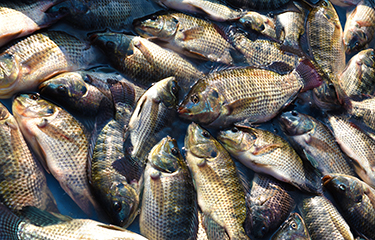What Africa can learn from Egypt's and Brazil’s tilapia markets

Tilapia production in Sub-Saharan Africa has the potential to expand to both meet regional fish consumption demand and increase export volumes, emulating the success story of fish farming in Egypt and Brazil, according to Aqua-Spark Senior Aquaculture Industry Analyst Willem van der Pijl.
The focus of Sub-Saharan Africa tilapia producing countries, he said, should be on promoting and attracting additional investments from large-scale tilapia producers who have the capacity to diversify into processing, marketing, and distributing seafood.
Large-scale tilapia farms have a crucial role to play in making tilapia deliver on its promise in Sub-Saharan Africa, like in the case of Brazil, van der Pijl said.
“Looking at Brazil strengthens our belief that large-scale farms have a crucial role to play in making tilapia deliver on its promise in Sub-Saharan Africa,” Pijl said. “Large farms can drive short- and medium-term expansion in cage farming through scaling existing farms and developing new greenfield projects in underutilized waterbodies.”
Large tilapia farms, Pijl adds, not only provide much-needed employment, but “can ignite local tilapia industries throughout grower programs that support smaller-scale farmers with all of the required inputs and access to markets.”
“While this is certainly the case for cage-farming, it may be even more so for pond-farming, which, in the long-term, may well have the largest potential for growth,” he said.
Pijl said Sub-Saharan African region governments should work to promote favorable aquaculture investment policies and support deployment of intensive fish-farming systems to translate tilapia production in the region into a success story that replicates, albeit to a lesser extent, that of Egypt and Brazil, two of the world’s top aquaculture producers.
Although Pijl sids Sub-Saharan Africa’s tilapia production cannot be directly compared with that of Egypt and Brazil due to the differences in development in terms of economy, basic infrastructure, and the existence of a middle class, “there are some things we observe in relation to tilapia farming in Egypt and Brazil that can help us to identify some of the crucial elements that might ultimately help tilapia farming in Sub-Saharan Africa to expand.”
Currently, almost all tilapia produced in Africa – particularly Uganda, Nigeria, Zambia, Ghana, Kenya, Zimbabwe, Malawi, Tanzania, and Ivory Coast – is locally consumed, with very limited exports, according to Food and Agriculture Organization (FAO). The Nile tilapia is “by far the major candidate for commercial aquaculture in Africa and worldwide, the U.N. agency said.
Being the traditional and favorite dish in almost all countries of Africa, tilapia offers an opportunity for increasing seafood production in the Sub-Saharan Africa region and could make it possible to increase fish consumption per capita – currently estimated at 8.9 kilograms, far below the global average of 18.9 kilograms, according to the FAO.
The entire African continent’s tilapia output was estimated 1.6 million metric tons in 2017 from both wild and aquaculture sources, with preferred species being the Nile tilapia and Oreochromis niloticus.
Although Sub-Saharan Africa’s aquaculture investments fall far behind that of Brazil’s large producers, which have invested in processing, freezing, cold storage, and transport facilities – and deliver fish to the market themselves – the region can learn the role of the private sector and larger farms in the development of small-scale fish farms to boost the tilapia value chain from the Latin American market.
“In Sub-Saharan Africa, the private sector, and especially large farms, will play a crucial role in developing the production of small-scale fish farmers, and Brazil’s cooperatives can provide a good example of how to do this,” van der Pijl said.
Brazil’s aquaculture cooperatives Copacol and C-Vale have successfully grown to provide small-scale tilapia farmers with inputs such as feed and fingerlings, in addition to supporting them with services such as pond construction, licensing, and harvesting. The cooperatives then buy back the fish produced for processing. That model could be replicated in Africa, according to van der Pijl.
Furthermore, the tilapia industry in Sub-Saharan Africa would require “the availability of quality but affordable feed and advanced genetics are crucial elements to success.”
“Luckily, the availability of feed in sub-Saharan Africa is rapidly expanding, but access to advanced genetics is still limited,” van der Pijl said.
Moreover, Pijl said, governments in Sub-Saharan African would need to “establish regulatory frameworks that allow the private sector to produce and supply affordable and quality feed, and advanced genetics.”
Governments in Sub-Saharan Africa can therefore look at Egypt and Brazil for inspiration, Pijl said.
“Both in Egypt and Brazil, the respective governments assume this role by weighing the interests of different stakeholders and ensuring that the expansion of tilapia farming doesn’t come at the cost of others,” he said.
Photo courtesy of sofirinaja/Shutterstock






Share